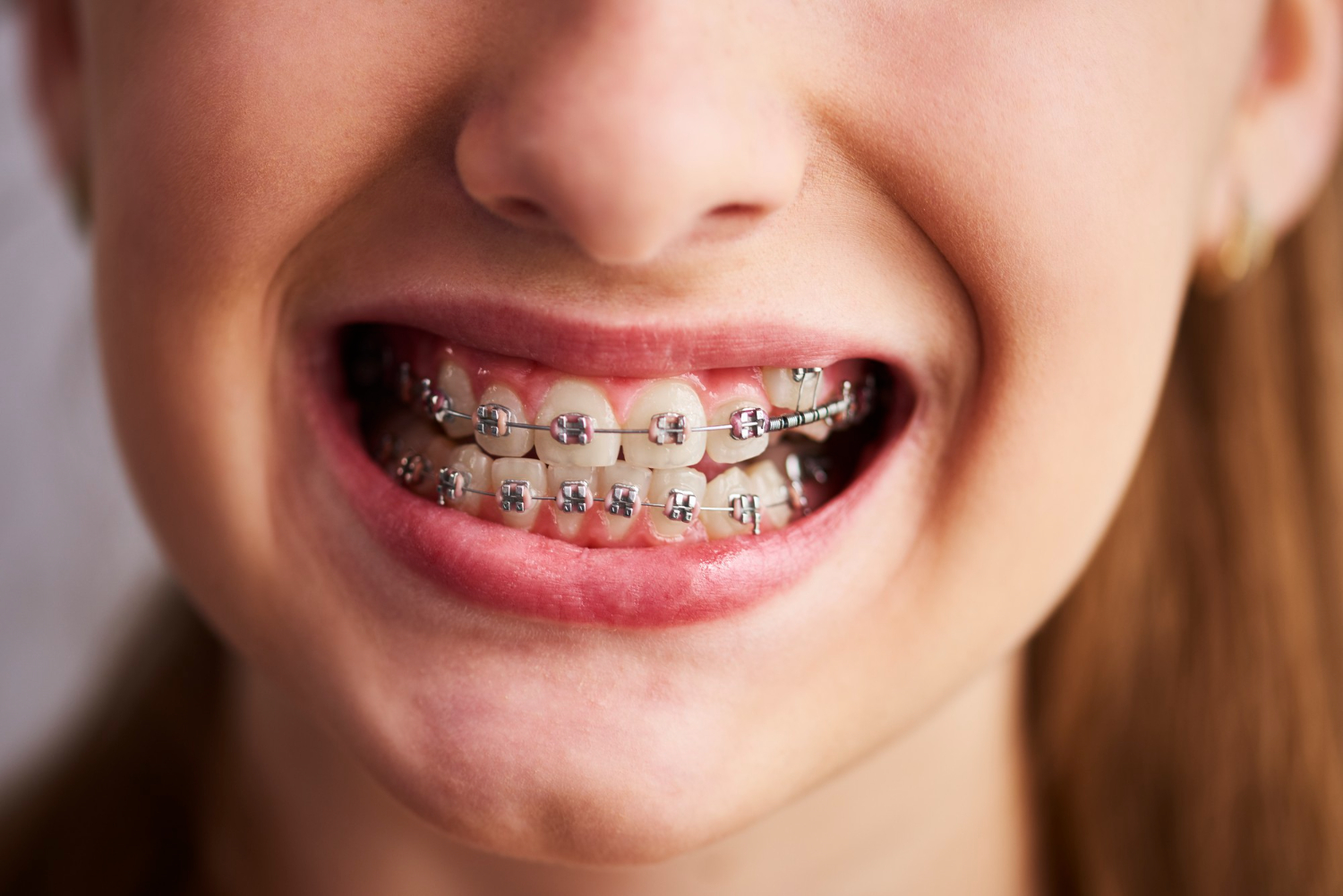If you’ve taken the first step toward achieving a more beautiful, healthier smile by choosing orthodontic treatment with metal braces—congratulations! First of all, let us say that you’ve made a decision you definitely won’t regret, as the results will be well worth it. That said, the first few days after getting braces can feel a bit uncomfortable or unfamiliar. This is completely normal and to be expected. Below, you’ll find a detailed guide on what to expect if you’ve just gotten braces and are wondering what the early days will be like.
What to expect when it comes to braces placement
Braces are placed during a single visit to the orthodontist and the procedure takes about half an hour. The process is completely painless. The teeth are cleaned, a special adhesive is applied to each tooth, and the brackets are attached on top. Metal bands are placed on the back molars, which may cause slight pressure but not pain.
Once all the brackets are in place, the orthodontist threads a thin wire through them to connect them. This gentle pressure may cause mild discomfort over the next few hours or days, as the teeth begin to move.
What happens after braces are placed in the first few days?
It’s completely normal to feel some discomfort in your mouth during the first 2–4 days after getting braces, especially while eating. This is a sign that the orthodontic treatment has started to take effect. After a few weeks, your teeth will begin to adjust, and the mild movement and sensitivity will gradually decrease.
The lips, cheeks, and tongue may experience irritation or minor injuries due to friction with the braces. This usually lasts 1–2 weeks, until the contact areas “toughen up” and the discomfort subsides.
Useful relief tips:
- Take a painkiller with paracetamol or another similar active ingredient (whatever you take for a headache), if necessary.
- Apply orthodontic wax to the areas that bother you.
- Do mouthwashes with chamomile.
- Apply a special ointment or gel for mouth sores.
If the pain is severe or persists, contact your orthodontist.
Dietary restrictions after the braces are placed in the first few days and throughout the entire period of orthodontic treatment
In the first few days after getting braces, it’s best to choose soft foods that don’t require heavy chewing, such as yogurt, soups, mashed potatoes, pasta, bananas, and eggs. Likewise, it’s important to avoid foods that could dislodge the brackets or injure your mouth, such as:
- Sticky foods (candy, chewing gum, Turkish delights)
- Hard foods (popcorn, nuts, dry bread)
- Foods that are bitten whole (apples, corn, carrots – cut into small pieces)
- Foreign objects (do not bite pens, pencils or your nails).
Try not to bite with your front teeth and cut your food into small pieces.
Oral hygiene
Braces easily trap food residue and plaque, which increases the risk of tooth decay or gingivitis. Here’s why:
- Brush your teeth three times a day, for at least three minutes each time.
- Clean all surfaces of the teeth, front, back, above and around the braces.
- Use special brushes or a guided floss to clean between the braces and the wire.
- Rinse with alcohol-free mouthwash.
- Bring your toothbrush to appointments and visit your dentist regularly for cleanings.
Adjustment and speech after braces are placed in the first few days
During the first 3–4 days after getting braces, it’s normal to feel a bit strange when speaking. Some patients notice a slight change in their speech, such as a temporary lisp. This usually goes away quickly. Over time, your mouth will adjust, and you’ll barely notice the braces at all. After each follow-up appointment, you might experience mild discomfort again as the orthodontist tightens the braces. This feeling is similar to what you felt during the first week and typically subsides within a few days.
Minor issues and what to do
If a brace detaches or a wire bothers you:
- Don’t panic. Apply some wax on the area and contact your orthodontist.
- If a brace comes off, save it and bring it to your next appointment.
- If you play sports, wear a special protective aligner to protect your mouth from injuries.
Is there an alternative without braces?
If the idea of braces makes you anxious or seems too restrictive, there’s also the option of orthodontic treatment with clear aligners like Invisalign. These aligners are removable, nearly invisible, and fit your teeth like a “glove.” Since they don’t involve wires or other “hardware,” they are far more comfortable and don’t cause irritation or injury inside the mouth.
In general, during the first few days after getting braces, you may experience some pain and discomfort—but with a little patience and care, you’ll find that it becomes manageable and eventually stops being an issue. Remember, all this effort is worth it. Before long, you’ll start to see the results and smile with complete confidence. Invisalign Orthodontist in Athens, Dr. Angeliki Nikolopoulou, ensures that every orthodontic treatment she provides is as painless and pleasant as possible.

